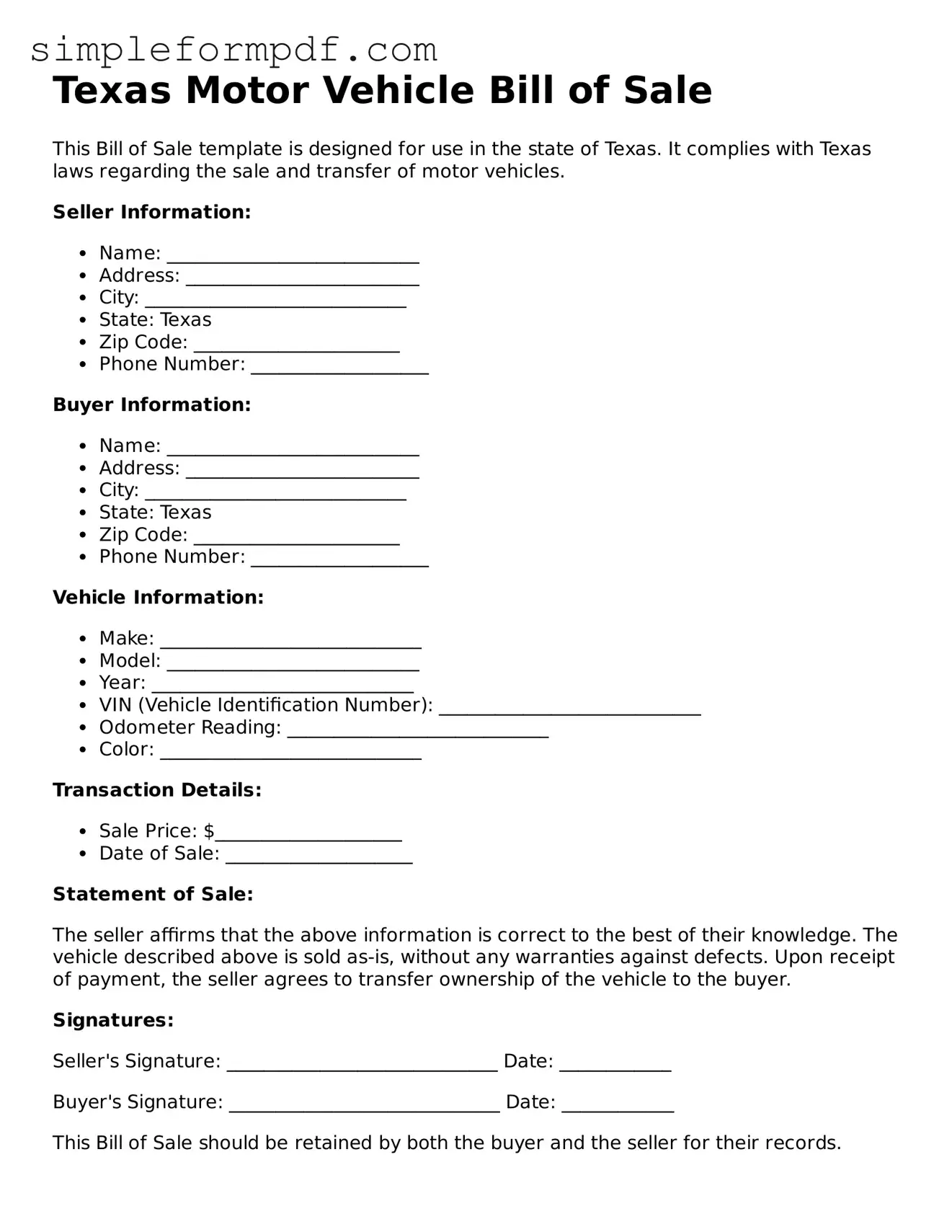Texas Motor Vehicle Bill of Sale
This Bill of Sale template is designed for use in the state of Texas. It complies with Texas laws regarding the sale and transfer of motor vehicles.
Seller Information:
- Name: ___________________________
- Address: _________________________
- City: ____________________________
- State: Texas
- Zip Code: ______________________
- Phone Number: ___________________
Buyer Information:
- Name: ___________________________
- Address: _________________________
- City: ____________________________
- State: Texas
- Zip Code: ______________________
- Phone Number: ___________________
Vehicle Information:
- Make: ____________________________
- Model: ___________________________
- Year: ____________________________
- VIN (Vehicle Identification Number): ____________________________
- Odometer Reading: ____________________________
- Color: ____________________________
Transaction Details:
- Sale Price: $____________________
- Date of Sale: ____________________
Statement of Sale:
The seller affirms that the above information is correct to the best of their knowledge. The vehicle described above is sold as-is, without any warranties against defects. Upon receipt of payment, the seller agrees to transfer ownership of the vehicle to the buyer.
Signatures:
Seller's Signature: _____________________________ Date: ____________
Buyer's Signature: _____________________________ Date: ____________
This Bill of Sale should be retained by both the buyer and the seller for their records.
